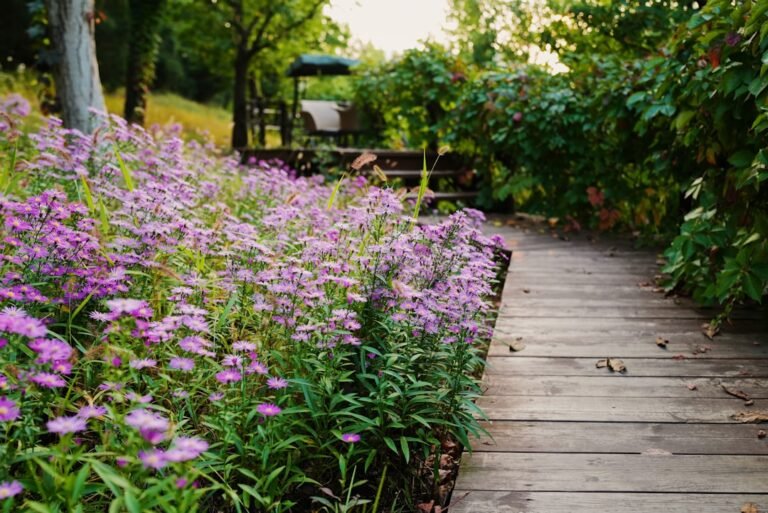Snapdragons, with their vibrant colors and unique shape, are a beloved flower in spring gardens around the world. These beautiful flowers, scientifically known as Antirrhinum, are native to the Mediterranean region and have been cultivated for centuries. They are known for their tall spikes of blossoms that resemble the face of a dragon, hence their name. Snapdragons come in a wide range of colors, including pink, red, yellow, orange, and white, making them a popular choice for adding a pop of color to any garden.
Key Takeaways
- Snapdragons are colorful flowers that bloom in the spring.
- Snapdragons have a rich history and cultural significance.
- There are different varieties of snapdragons with unique characteristics.
- Growing and caring for snapdragons in your garden is easy with proper care.
- Snapdragons play an important role in pollination and ecology.
The History and Significance of Snapdragons
Snapdragons have a rich history and cultural significance that dates back centuries. They were first cultivated by the ancient Greeks and Romans, who believed that snapdragons had magical powers and could protect against evil spirits. In medieval Europe, snapdragons were associated with witchcraft and were often used in potions and spells. They were also believed to have healing properties and were used in traditional medicine to treat various ailments.
The Different Varieties of Snapdragons and Their Characteristics
There are several different varieties of snapdragons, each with its own unique characteristics. The most common variety is the tall snapdragon (Antirrhinum majus), which can grow up to 3 feet tall and produces large spikes of flowers. There are also dwarf varieties that only grow to be about 6-12 inches tall, making them perfect for smaller gardens or containers. Some varieties have double flowers, which means they have extra petals and a fuller appearance. Others have ruffled or fringed petals, adding even more visual interest to the flower.
How to Grow and Care for Snapdragons in Your Garden
| Topic | Information |
|---|---|
| Plant Type | Perennial or annual |
| Sunlight | Full sun to partial shade |
| Soil Type | Well-draining soil with organic matter |
| Watering | Regular watering, but avoid overwatering |
| Fertilizer | Use a balanced fertilizer every 4-6 weeks |
| Pruning | Pinch off spent blooms to encourage new growth |
| Pests | Watch for aphids, spider mites, and caterpillars |
| Diseases | Watch for rust and powdery mildew |
| Propagation | Can be grown from seed or cuttings |
Snapdragons are relatively easy to grow and care for, making them a popular choice for both experienced gardeners and beginners. They prefer full sun but can tolerate some shade, and they thrive in well-drained soil. It’s important to water snapdragons regularly, especially during dry spells, to keep the soil moist. Deadheading, or removing spent flowers, will encourage the plant to produce more blooms. Snapdragons are also susceptible to pests such as aphids and spider mites, so it’s important to keep an eye out for any signs of infestation and take appropriate measures to control them.
The Importance of Snapdragons in Pollination and Ecology
Snapdragons play an important role in pollination and are a valuable food source for bees, butterflies, and other pollinators. The tubular shape of the flowers makes it easy for these insects to access the nectar inside. By attracting pollinators, snapdragons help to ensure the reproduction of other plants in the garden and contribute to the overall health of the ecosystem. Additionally, snapdragons are known to attract beneficial insects such as ladybugs and lacewings, which help to control pests in the garden.
The Symbolism and Cultural Significance of Snapdragons

Snapdragons have different symbolic meanings in different cultures. In Victorian England, snapdragons were associated with deception and were often given as a gift to someone who was not trustworthy. In Chinese culture, snapdragons are a symbol of strength and protection and are often used in traditional celebrations and ceremonies. In the language of flowers, snapdragons symbolize graciousness and strength, making them a popular choice for bouquets and floral arrangements.
The Medicinal and Therapeutic Properties of Snapdragons
Snapdragons have long been used in traditional medicine for their potential health benefits. They contain compounds called glycosides, which have anti-inflammatory properties and may help to reduce pain and inflammation. Snapdragons have also been used to treat respiratory conditions such as coughs and bronchitis, as well as digestive issues and skin conditions. While more research is needed to fully understand the medicinal properties of snapdragons, they have been used for centuries in traditional medicine and continue to be valued for their potential therapeutic benefits.
Snapdragons in Art and Literature: A Cultural Perspective
Snapdragons have been a popular subject in art and literature throughout history. In Renaissance paintings, snapdragons were often depicted as symbols of deceit and temptation. In literature, snapdragons have been used as a metaphor for hidden desires or secret passions. They have also been used to represent strength and resilience in the face of adversity. From ancient myths to modern poetry, snapdragons have captured the imagination of artists and writers alike.
Snapdragons in Floral Arrangements and Bouquets: Tips and Ideas
Snapdragons are a versatile flower that can be used in a variety of floral arrangements and bouquets. Their tall spikes make them an excellent choice for adding height and structure to an arrangement. They can be paired with other spring flowers such as tulips, daffodils, and hyacinths for a colorful and fragrant bouquet. Snapdragons also make a stunning centerpiece when arranged on their own in a vase. For a more modern look, try combining snapdragons with succulents or other foliage plants.
Embracing the Beauty and Versatility of Snapdragons in Spring
Snapdragons are truly a flower of beauty and versatility, with their vibrant colors, unique shape, and rich cultural history. Whether you’re an experienced gardener or just starting out, snapdragons are a great choice for adding color and interest to your spring garden. From their role in pollination to their symbolic meanings in different cultures, snapdragons have a fascinating story to tell. So why not embrace the beauty of snapdragons and add them to your garden this spring? You won’t be disappointed.
If you’re interested in learning more about snapdragons, you might also enjoy reading about the fascinating story of Gypsy Rose Blanchard’s release. This complex tale, covered in an article on Just Tidings, delves into the life of Gypsy Rose Blanchard and the events that led to her incarceration. To find out more about this intriguing story, click here.




















+ There are no comments
Add yours